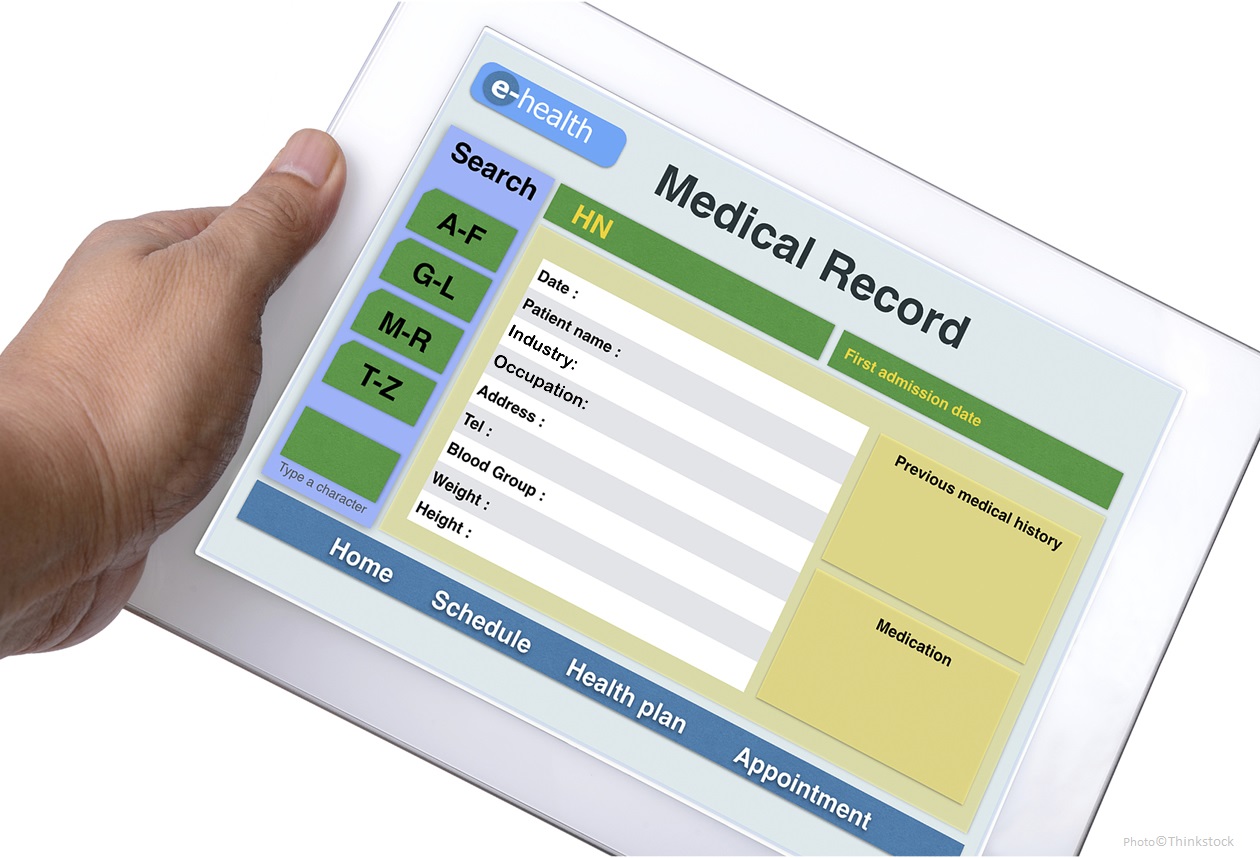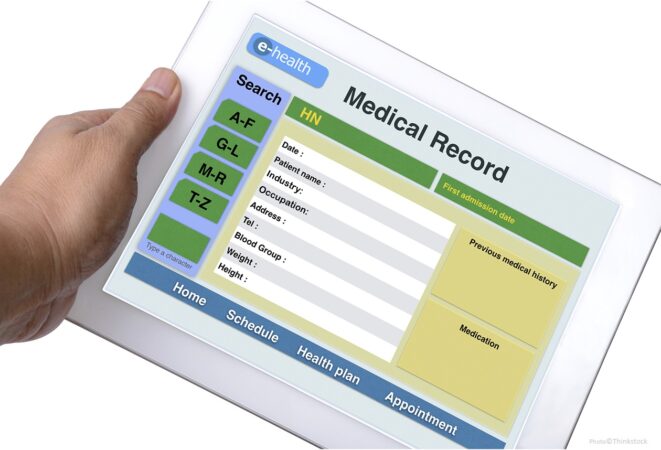
- Electronic Health Record (EHR) Definition and Purpose
- Key Features of EMR Software
- Types of EMR Software
- EMR Software Market Trends
- Benefits of Using EMR Software
- Challenges of Implementing EMR Software
- EMR Software Evaluation and Selection
- EMR Software Customization and Integration
- Future of EMR Software
Electronic Health Record (EHR) Definition and Purpose
An Electronic Health Record (EHR) is a digital version of a patient’s medical history that is accessible to healthcare providers. It contains a comprehensive record of the patient’s health information, including demographics, medical conditions, medications, allergies, immunizations, laboratory results, radiology images, and other relevant data.
EHRs play a crucial role in modern healthcare by improving the quality, efficiency, and coordination of care. They facilitate secure and timely access to patient information, enabling healthcare providers to make informed decisions, reduce errors, and improve patient outcomes.
Benefits of EHRs
- Improved patient care: EHRs provide a comprehensive view of a patient’s medical history, enabling healthcare providers to make more informed and timely decisions.
- Reduced errors: EHRs automate many tasks, such as medication ordering and prescription checking, reducing the risk of errors.
- Increased efficiency: EHRs streamline communication between healthcare providers, reducing the time spent on paperwork and administrative tasks.
- Improved coordination of care: EHRs facilitate the sharing of patient information among different healthcare providers, ensuring continuity of care.
- Enhanced patient engagement: EHRs provide patients with access to their own health information, empowering them to make informed decisions about their care.
Challenges of EHRs
- Implementation costs: Implementing an EHR can be a significant financial investment, particularly for smaller healthcare organizations.
- Workflow disruption: Implementing an EHR can disrupt existing workflows and require significant staff training.
- Data privacy and security concerns: EHRs contain sensitive patient information, so ensuring their privacy and security is crucial.
- Interoperability issues: EHRs from different vendors may not be fully interoperable, making it challenging to share patient information across healthcare systems.
- User acceptance: Healthcare providers may need time to adjust to using EHRs, and user acceptance is essential for successful implementation.
Key Features of EMR Software
Electronic health record (EMR) software offers a comprehensive suite of features designed to streamline healthcare processes, improve patient care, and enhance operational efficiency. These features empower healthcare providers with the tools they need to deliver high-quality, personalized care.
Here’s a comprehensive list of essential features in EMR software:
Patient Management
- Patient demographics: Store and manage essential patient information, including name, address, contact details, insurance, and medical history.
- Appointment scheduling: Efficiently schedule and manage patient appointments, reducing wait times and improving patient satisfaction.
- Patient portal: Provide patients with secure online access to their medical records, appointment information, and other relevant data.
Clinical Documentation
- Electronic health records (EHRs): Create and maintain comprehensive electronic health records that include patient demographics, medical history, diagnoses, medications, and treatment plans.
- Structured templates: Utilize pre-defined templates to streamline documentation, reduce errors, and improve consistency.
li>Progress notes: Document patient encounters, including subjective and objective findings, assessments, and plans.
Medication Management
- Medication prescribing: Prescribe medications electronically, reducing the risk of errors and improving medication adherence.
- Drug interaction checking: Identify potential drug interactions and provide alerts to prevent adverse events.
- Refill requests: Process and manage patient refill requests, ensuring timely access to medications.
Billing and Revenue Cycle Management
- Medical billing: Generate and submit medical bills accurately and efficiently, improving revenue collection.
- Insurance claim processing: Automate insurance claim submission and follow-up, reducing administrative burden and improving cash flow.
- Patient billing: Manage patient billing statements, including payments, adjustments, and refunds.
Reporting and Analytics
- Clinical reporting: Generate reports on patient demographics, diagnoses, procedures, and outcomes, supporting quality improvement initiatives.
- Financial reporting: Track financial performance, including revenue, expenses, and profitability.
- Data analytics: Analyze data to identify trends, improve patient outcomes, and optimize operations.
Interoperability and Integration
- HL7 interface: Connect with other healthcare systems and devices, enabling seamless data exchange.
- API integration: Integrate with third-party applications, such as lab systems and patient portals.
- Cloud-based architecture: Access data and functionality from anywhere, anytime, and on any device.
Types of EMR Software

EMR software can be categorized based on their deployment models, which refer to the manner in which they are hosted and accessed. There are two primary deployment models: cloud-based and on-premise.
Cloud-based EMR Software
Cloud-based EMR software is hosted on remote servers managed by a third-party vendor. Users access the software through an internet connection, eliminating the need for local installation and maintenance.
Advantages:
– Accessibility: Cloud-based EMRs can be accessed from anywhere with an internet connection.
– Scalability: Cloud vendors can easily scale the system to accommodate changing needs.
– Cost-effective: Cloud-based EMRs often have lower upfront costs compared to on-premise systems.
Disadvantages:
– Internet dependency: Cloud-based EMRs require a reliable internet connection for access.
– Security concerns: Some organizations may have concerns about the security of data stored on third-party servers.
On-premise EMR Software
On-premise EMR software is installed and hosted on the organization’s own servers. This gives the organization complete control over the system and data.
Advantages:
– Control: Organizations have full control over the software and data, including security measures.
– Customization: On-premise EMRs can be customized to meet the specific needs of the organization.
– Data security: Data is stored locally, providing greater control over security.
Disadvantages:
– High upfront costs: On-premise EMRs require significant investment in hardware, software, and maintenance.
– Limited accessibility: Users can only access the system from within the organization’s network.
– Maintenance: Organizations are responsible for ongoing maintenance and updates of the system.
EMR Software Market Trends
The EMR software market is undergoing a period of rapid growth and innovation. Driven by the increasing adoption of electronic health records (EHRs), the market is expected to reach $38.5 billion by 2028, according to a report by Grand View Research.
Several key trends are shaping the EMR software market:
Cloud-Based EMRs
Cloud-based EMRs are becoming increasingly popular due to their ease of use, scalability, and cost-effectiveness. Cloud-based EMRs are hosted on a remote server, which eliminates the need for healthcare providers to purchase and maintain their own hardware and software. This can save providers a significant amount of money and time.
Mobile EMRs
Mobile EMRs allow healthcare providers to access patient information from anywhere, at any time. This can improve patient care by providing providers with the information they need to make informed decisions, even when they are not in the office. Mobile EMRs are also becoming increasingly popular among patients, who can use them to view their own medical records and communicate with their providers.
Artificial Intelligence (AI)
AI is being used to improve the efficiency and accuracy of EMR software. AI-powered EMRs can automate tasks such as data entry, coding, and billing. This can free up healthcare providers to spend more time on patient care. AI can also be used to identify patterns in patient data, which can help providers to make better decisions about patient care.
Benefits of Using EMR Software
Electronic Health Record (EMR) software offers numerous advantages to healthcare organizations. These benefits encompass both clinical and operational aspects, leading to improved patient care, enhanced efficiency, and cost savings.
Clinically, EMR software enables healthcare providers to access and share patient information instantly, enhancing the quality of care. It facilitates accurate diagnosis, timely interventions, and reduces medication errors. Moreover, EMR software promotes patient engagement and empowers them to participate in their healthcare decisions.
Operational Benefits
- Improved Efficiency: EMR software streamlines administrative tasks, such as scheduling appointments, managing insurance claims, and generating reports, freeing up healthcare staff for patient care.
- Cost Savings: By automating processes and reducing paper usage, EMR software can significantly reduce operating costs for healthcare organizations.
- Enhanced Collaboration: EMR software fosters collaboration among healthcare providers within and outside the organization, facilitating seamless information sharing and improved patient outcomes.
- Increased Revenue: By reducing administrative burdens and improving patient care, EMR software can increase revenue for healthcare organizations.
Challenges of Implementing EMR Software
Implementing EMR software can be a complex and challenging endeavor. Organizations may encounter various obstacles throughout the implementation process, including:
• Data migration: Transferring patient data from existing systems to the new EMR can be a time-consuming and error-prone process.
• Workflow disruptions: Implementing EMR software can disrupt existing workflows and require staff to adapt to new processes.
• Lack of user adoption: Resistance to change and inadequate training can hinder user adoption of the new EMR system.
• Integration with other systems: EMR software needs to be integrated with other hospital systems, such as billing and scheduling systems, which can be a complex and costly process.
• Cybersecurity risks: EMR systems contain sensitive patient data, making them a target for cyberattacks.
Recommendations for Overcoming Challenges
To overcome these challenges, organizations should:
- Plan thoroughly: Develop a comprehensive implementation plan that includes data migration, workflow redesign, and user training.
- Engage stakeholders: Involve key stakeholders, including clinicians, nurses, and IT staff, in the implementation process to gain their buy-in and address their concerns.
- Provide adequate training: Provide comprehensive training to all users on the new EMR system, ensuring they are comfortable with the new workflows and functionality.
- Implement gradually: Consider a phased implementation approach to minimize disruptions and allow for user feedback and adjustments.
- Monitor and evaluate: Continuously monitor the implementation process and evaluate the system’s performance to identify and address any issues or areas for improvement.
EMR Software Evaluation and Selection
Selecting the right EMR software is crucial for healthcare organizations to streamline their operations and enhance patient care. The evaluation and selection process involves several key steps and considerations.
Factors to consider include the organization’s specific needs, budget, workflow, and interoperability requirements. Best practices for making an informed decision include:
Vendor Research
- Identify vendors that offer solutions aligned with your organization’s needs.
- Review vendor websites, case studies, and industry reports.
- Request demos and references from existing customers.
Software Assessment
- Evaluate the software’s functionality, usability, and technical capabilities.
- Consider the software’s ability to integrate with existing systems.
- Assess the vendor’s support and maintenance offerings.
Implementation Planning
- Develop a detailed implementation plan, including timelines, resources, and training.
- Identify potential challenges and develop mitigation strategies.
- Communicate the implementation plan to all stakeholders.
Ongoing Evaluation
- Monitor the software’s performance and user satisfaction regularly.
- Identify areas for improvement and implement necessary updates.
- Seek feedback from users and stakeholders to ensure the software meets their needs.
EMR Software Customization and Integration
Customizing EMR software is crucial to align it with an organization’s unique workflow, patient population, and regulatory requirements. This personalization enhances efficiency, accuracy, and user adoption. Strategies for customization include:
– Configuring user interfaces, data fields, and templates to match specific needs.
– Developing custom modules and reports to address organization-specific processes.
– Integrating external applications and devices to expand functionality.
Integration with Other Healthcare Systems
Integrating EMR software with other healthcare systems, such as patient portals, lab systems, and imaging platforms, enables seamless data exchange and improves patient care. This integration:
– Streamlines communication between providers and patients.
– Facilitates efficient test ordering and result retrieval.
– Enables remote patient monitoring and telehealth services.
– Reduces duplicate data entry and improves accuracy.
Future of EMR Software
The future of EMR software is expected to be marked by continuous innovation and advancements. As technology evolves, EMR systems are likely to become even more sophisticated and integrated, offering healthcare providers and patients with a wide range of benefits.
One of the key trends shaping the future of EMR software is the increasing adoption of artificial intelligence (AI). AI-powered EMR systems can automate many tasks, such as data entry, coding, and patient scheduling, freeing up healthcare providers to focus on providing care. AI can also be used to identify patterns and trends in patient data, which can help providers make more informed decisions about patient care.
Another trend that is expected to shape the future of EMR software is the increasing use of mobile devices. Mobile EMR systems allow healthcare providers to access patient data from anywhere, which can improve patient care and communication. Mobile EMR systems can also be used to collect patient-generated data, such as activity trackers and blood glucose monitors, which can provide providers with a more complete picture of the patient’s health.
The future of EMR software is bright. As technology continues to evolve, EMR systems are likely to become even more sophisticated and integrated, offering healthcare providers and patients with a wide range of benefits.
Security Enhancements
The future of EMR software will also see a continued focus on security. As healthcare data becomes more valuable, it is increasingly important to protect it from cyberattacks. EMR vendors are investing in new security measures, such as encryption, two-factor authentication, and blockchain technology, to keep patient data safe.
Patient Engagement
The future of EMR software will also see a greater focus on patient engagement. EMR systems are increasingly being designed to give patients easy access to their own health information. This can help patients to be more involved in their own care and make more informed decisions about their health.
Interoperability
The future of EMR software will also see a continued focus on interoperability. EMR systems are becoming increasingly interoperable, which means that they can share data with other healthcare systems. This can help to improve patient care by providing healthcare providers with a more complete picture of the patient’s health.





